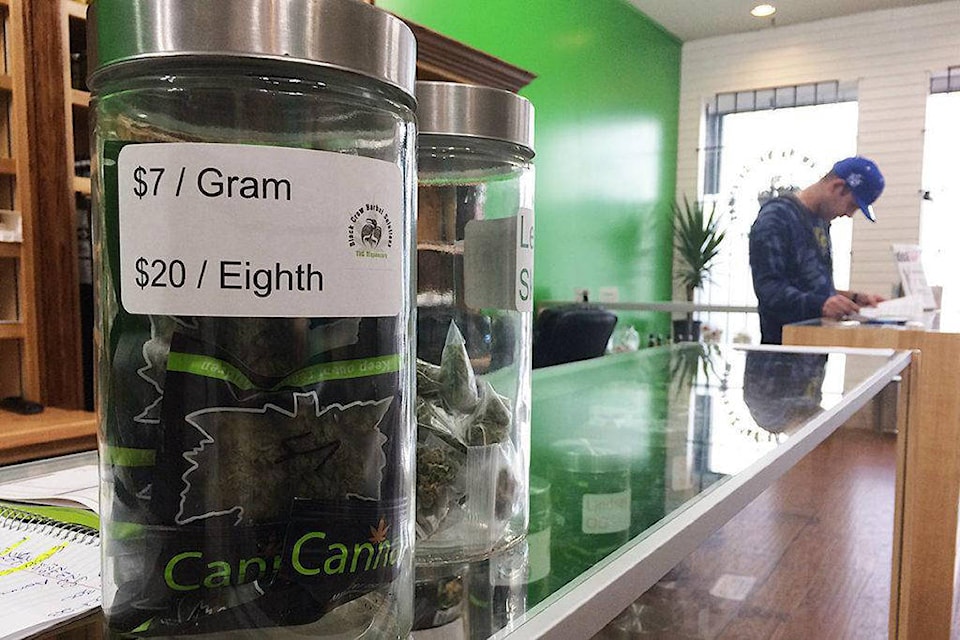If local governments are looking with unease at the looming legalization of recreational marijuana, it’s not surprising.
There have been precious few facts for them to build on.
Last week the provincial government tried to clear some of the smoke of how it would manage distribution and sale of the product.
But questions still remain.
The biggest is how municipalities will regulate the retail stores that will sell the cannabis products.
Although the province, through its liquor distribution branch, will manage the wholesale distribution, local sales will be a mix of private and government outlets.
The permit process for those storefronts, however, will rest with local government. They’ll have the final say on where the stores will be located, how far they can be situated from a school, or even if they’ll be allowed at all.
The provincial government is currently working with the Union of B.C. Municipalities to come up with some kind of broad plan.
But the clock is ticking.
The federal government has promised legalization by July. Retail sales aren’t expected to follow immediately; it will take some time for growers of what is still an illegal product to supply inventory.
However, industry is certainly getting prepared nonetheless. Recruitment companies have even been created to help for this burgeoning industry. In the interior, plans are in place for what’s being billed as the largest growing facility in the province, with 700,000 square feet of space and an annual production capability of 100,000 kilograms per year.
These projects aren’t just big, they’re lucrative. An Ontario licensed marijuana producer a similar B.C. company for a reported $230 million.
The city of Chilliwack, meanwhile, Tuesday for a 26,000 square foot medical marijuana facility on industrial land on Aitken Road.
That brought some discussion about the city’s participation in a trade that’s still fighting to find some legitimacy.
That conversation is likely to get louder as Chilliwack provides greater clarity on zoning applications, hours of operation and the number – if any – of retail stores allowed in the city.
There is still time for Chilliwack to develop a cohesive strategy that acknowledges this new regulatory reality, while still providing rules that discourage access by minors and reflect neighbourhood concern.
But that time is running out. Local governments need to make known their plans following the full decriminalization of marijuana, while providing ample opportunity for public feedback and discussion.
The result likely won’t satisfy everyone, but it is a conversation that needs to start happening sooner, rather than later.
Greg Knill is editor of the Chilliwack Progress


